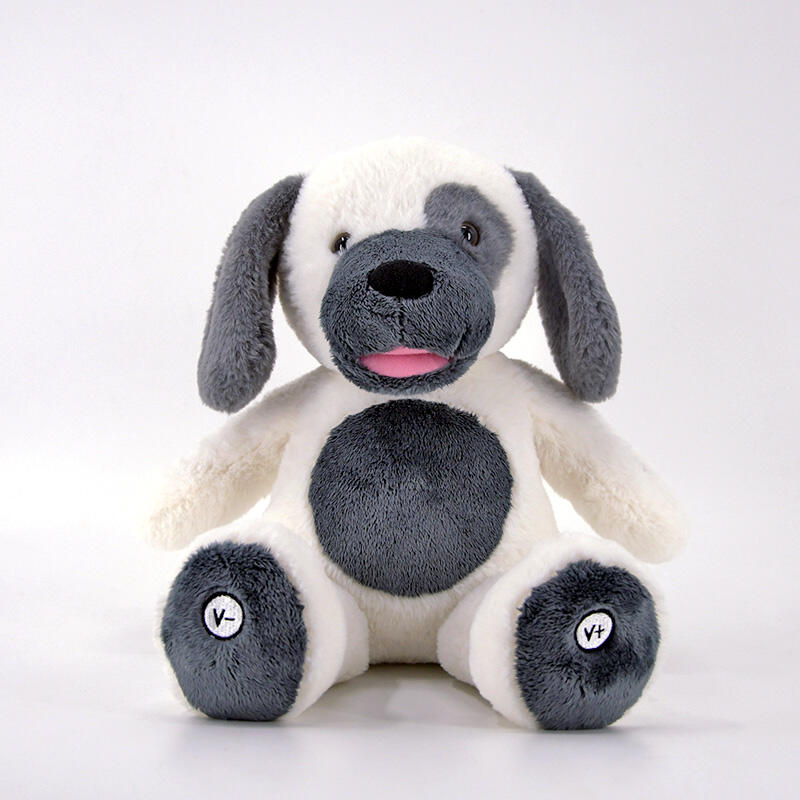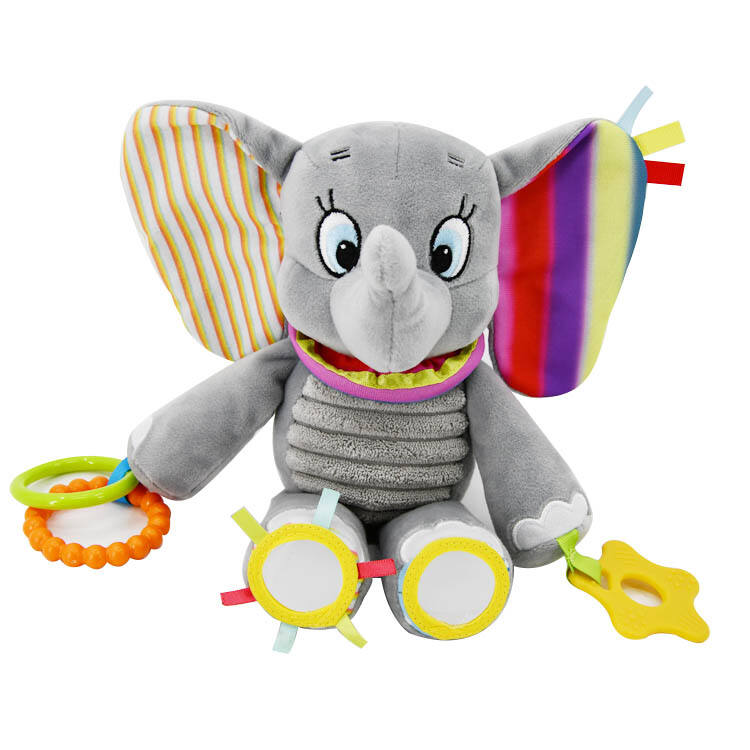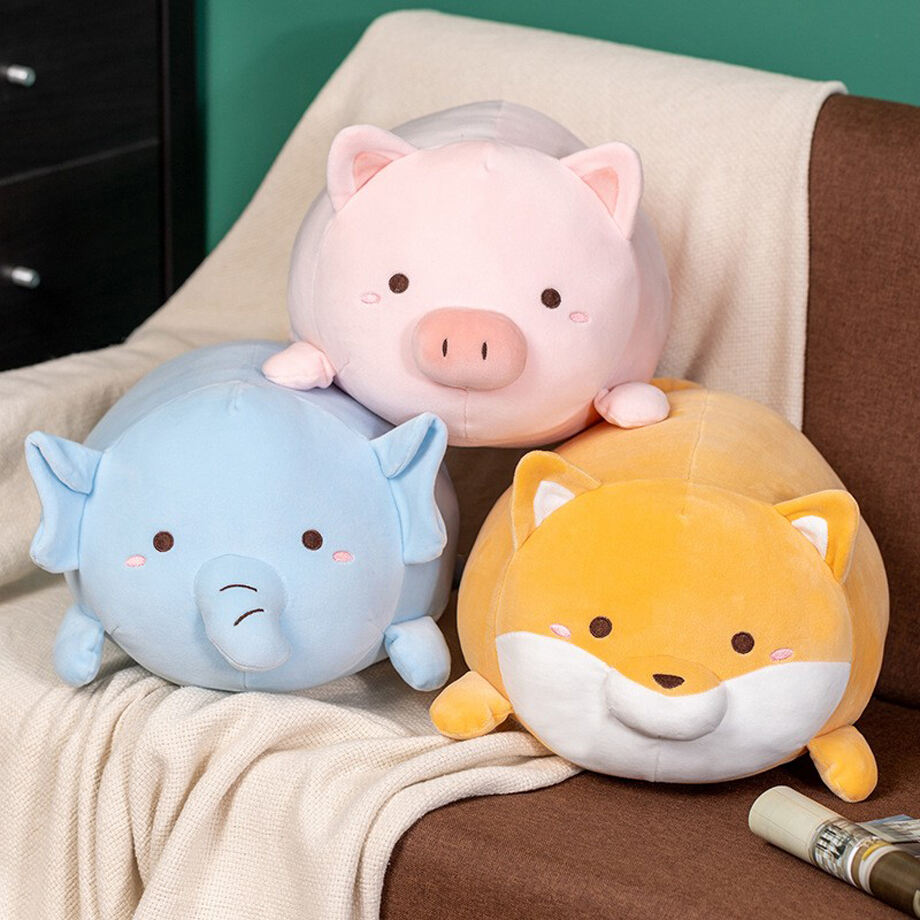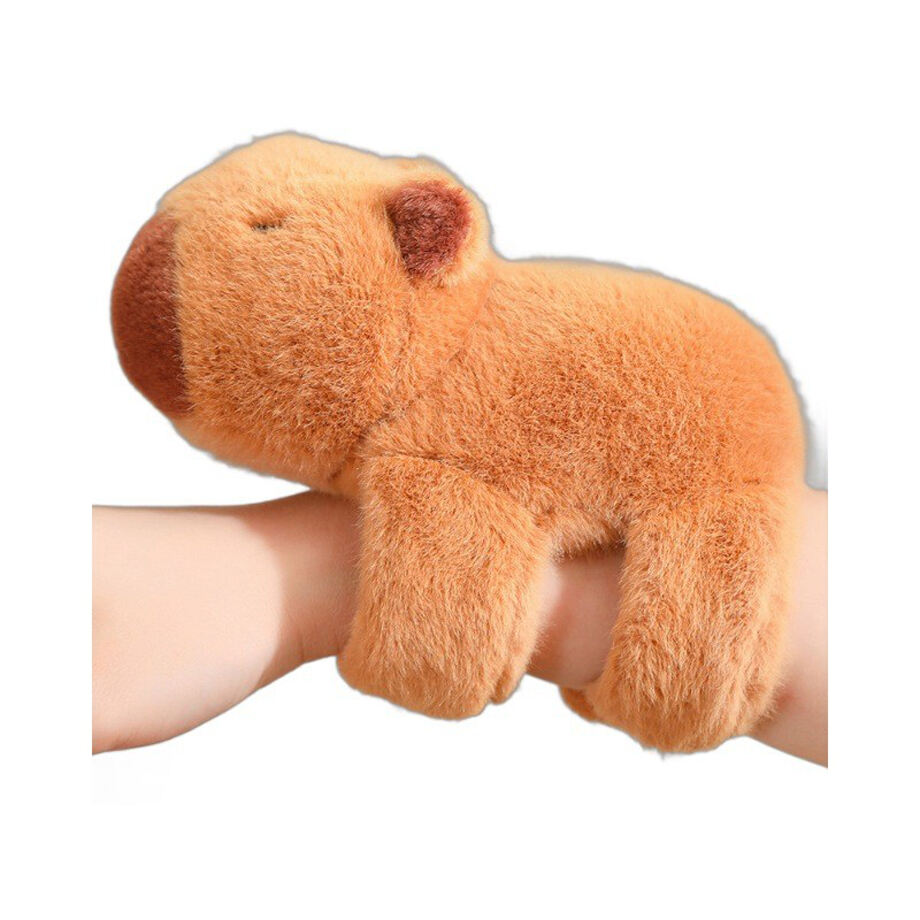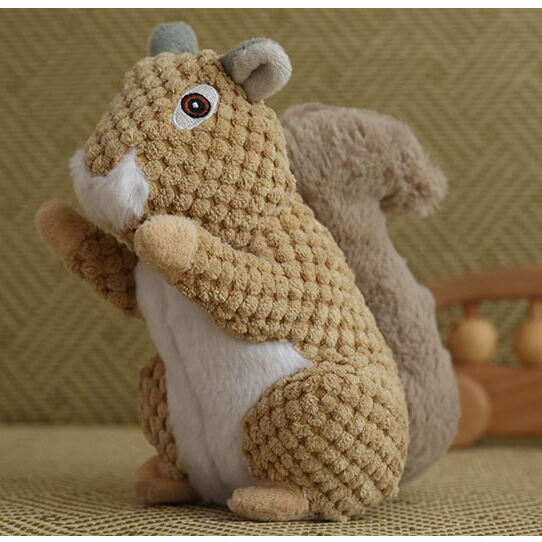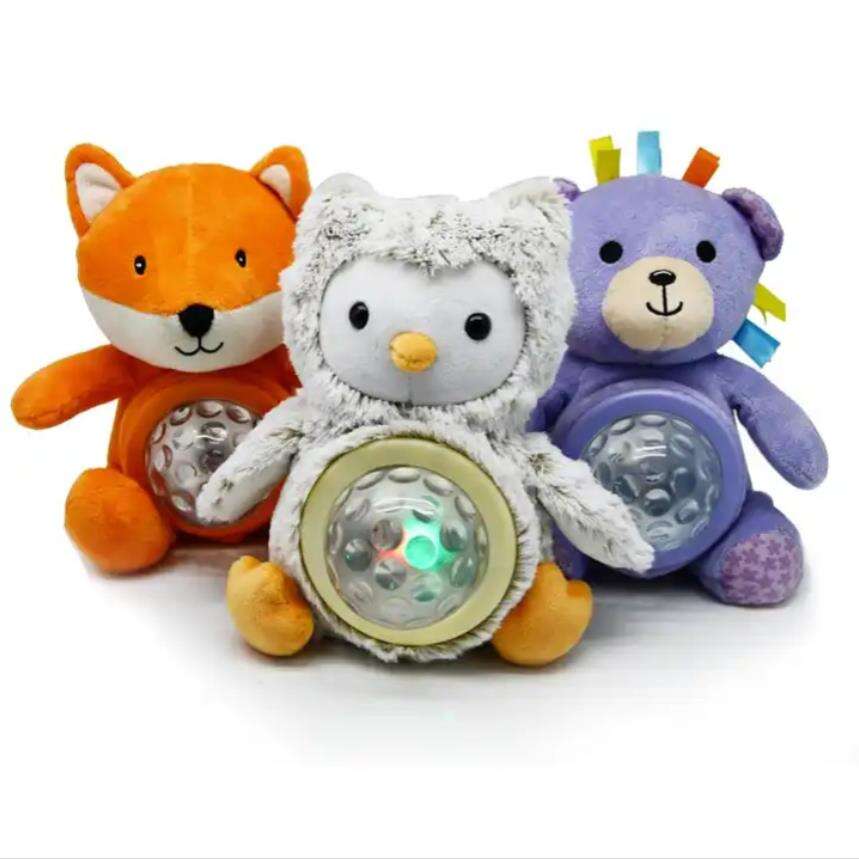Creative Designs of Stuffed Animals to Engage Kids
Why Creative Stuffed Animal Designs Matter for Child Development
Stimulating Imagination Through Unique Textures
Creative stuffed animal designs often feature varied textures that play a crucial role in enhancing sensory exploration, thereby aiding cognitive development. These textures can range from smooth satin-like fabrics to fuzzy plush surfaces, providing children with a spectrum of sensory experiences. Such interaction allows children to engage their tactile senses, making connections that can advance their understanding of the world.
A study published in the Journal of Child Psychology and Psychiatry illustrates how sensory exploration, particularly through touch, is directly linked to brain development in young people (Reference: Journal of Child Psychology and Psychiatry). Children often incorporate texture into their imaginative play scenarios; for instance, imagining a rough-textured stuffed creature as a friendly dinosaur or a silky one as a magical unicorn. Through these rich, tactile experiences, children's creativity blossoms, fostering an environment of educational growth and playful exploration.
Color Psychology in Plush Toy Selection
The concept of color psychology is fundamental in toy design, particularly in plush toys, as different colors can significantly affect children's emotions and behaviors. Bright and vivid colors like red and yellow can invoke feelings of excitement and enthusiasm. Conversely, cooler tones such as blue and green tend to promote calmness and comfort.
Child Development Research (Reference: Child Development Research) highlights how colors influence young minds, impacting their mood and play activities. Color combinations in plush toys can thus be strategically designed to encourage creativity, with palettes that stimulate imaginative adventures alongside options that evoke tranquility for quiet playtime. By understanding these psychological insights, designers craft toys that cater not only to entertainment but also to emotional growth and calming experiences.
Movement Features That Encourage Active Play
Innovative motion mechanisms in stuffed animals are significant in encouraging physical activity among children. Modern plush toys often incorporate features such as shaking, dancing, or walking, inspiring children to engage more actively during play. These interactive components prompt children to move, jump, and chase, fostering both physical and social development.
Active play has long been endorsed by experts like the American Academy of Pediatrics for its benefits to physical health, as children who participate in such activities show improved coordination and strength, alongside enhanced social skills and teamwork (Reference: American Academy of Pediatrics). Through the integration of movement features, stuffed animals not only serve as comforting companions but also as catalysts for energetic play, supporting development across multiple dimensions in a child's life.
Sensory Learning Through Tactile Elements
The tactile features of stuffed animals play a crucial role in enhancing sensory learning experiences for children. By incorporating varied materials such as soft fabrics, textured surfaces, and interesting embellishments, these plush toys can stimulate touch, which is essential for early childhood development. Learning theories in early education, such as Montessori, emphasize the importance of hands-on exploration. They advocate that sensory engagement can improve neural connections, boosting overall cognitive abilities. For instance, plush toys that integrate sensory elements, like those featuring crinkly nodes or soft velvet patches, effectively capture a child's curiosity and facilitate sensory-based learning.
Language Development with Interactive Features
Interactive features in stuffed animals, such as sound and light, can significantly boost language development in children. These features encourage verbal skills by prompting responses and feedback during play. For example, plush toys equipped with voice recordings or light-up elements can stimulate storytelling and improve communication skills. According to a study, children interacting with educational toys showed a marked improvement in language skills, underscoring the benefits of such interactions. Experts often highlight the role of interaction in language acquisition, noting that toys providing auditory and visual stimuli can be particularly effective in engaging young learners and fostering a vibrant learning environment.
STEM Concepts in Animal-Themed Plush
Stuffed animals can also be a vehicle to introduce basic STEM (Science, Technology, Engineering, Math) concepts to young children. Through creative designs, these toys can explain scientific principles, such as animal habitats or the physics of motion. Several plush toys incorporate elements that help convey these ideas, like a stuffed bird with a built-in sound system that mimics real bird calls, illustrating the science of animal communication. With the increasing trend towards STEM education in early childhood, educators and parents are now recognizing the educational potential that lies within animal-themed plush toys. These toys are supported by a range of educational resources, which agree that playful introduction to STEM concepts can spark lifelong interest and understanding in these critical areas.
Bluetooth-Connected Plush for Tech-Savvy Kids
Bluetooth-connected plush toys are revolutionizing playtime by seamlessly integrating technology into the world of children's toys. These plush toys feature Bluetooth connectivity that allows them to pair with smartphones, tablets, or other smart devices. This integration enhances engagement by letting children control sounds, lights, and even interactive storytelling through apps. Studies show that technology in play can significantly boost engagement and cognitive skills, making these toys increasingly popular among tech-savvy kids. However, it's crucial to address safety concerns and ensure parental controls are in place to manage exposure to technology, keeping play both fun and secure.
Machine-Washable Designs for Practical Parenting
The importance of hygiene in children's toys cannot be overstated, particularly when it comes to plush toys that are prone to dust and germs. Machine-washable designs offer a practical solution, making it easy for parents to maintain cleanliness without compromising on playtime. According to health standards, children's toys should be cleaned regularly to prevent allergies and infections. Brands like Jellycat and Melissa & Doug offer plush toys with easy washing features, promoting better hygiene. Experts advise parents to follow specific cleaning guidelines to ensure the longevity and safety of plush toys, keeping them in optimal condition for consistent child safety and well-being.
Weighted Stuffed Animals for Calming Effects
Weighted stuffed animals provide a comforting presence, offering anxiety relief through their unique design. These plush toys are filled with weighted beads or padding that mimic the effects of deep pressure therapy, which is known to aid children with sensory processing disorders.
Psychological studies, such as those published in the Journal of Child Psychology and Psychiatry, have shown that weight and pressure can have a calming effect on children, helping to reduce anxiety. Brands like Sensory Weighted Plush develop these products with features designed to promote calmness and focus, supporting parents in providing effective sensory solutions.
Interactive LED Plush Dog with Bluetooth Features
The Customized Creative LED Illuminated Plush Dog Toy stands out with its interactive LED and Bluetooth features, making it an ideal playmate for tech-savvy kids. This plush toy captivates children's attention by using vibrant LED lights and customizable sound effects that can be controlled via Bluetooth from smartphones or tablets. For example, parents have praised its ability to entertain children for extended periods, with many noting how the lights and sounds enhance their child's sensory play.
Furthermore, studies indicate that tech-integrated toys improve engagement and learning, making this plush toy a perfect blend of entertainment and education.
Hypoallergenic Personalized Elephant for Sensitive Skin
The Bulk Wholesale Personalized Soft Short Plush Elephant Baby Toy is crafted with hypoallergenic materials, making it a safe choice for children with sensitive skin. Hypoallergenic properties are crucial in reducing the risk of allergic reactions, ensuring a safe and comfortable playtime.
Parents can personalize these plush elephants with embroidered names or logos, creating a unique bond between the child and the toy. Industry statistics suggest a growing preference for hypoallergenic toys, as they align with parents' increasing focus on child safety. This personalized approach caters to children’s needs while maintaining a high standard of safety.
Rainbow Bear Plush with Multi-Sensory Textures
The Rainbow Bear Plush Toy is designed with multi-sensory textures that are not only visually appealing but also provide educational benefits for young children. The vibrant colors attract kids, while the varied textures help in developing their sensory abilities. Engaging with these multiple textures can promote cognitive growth and emotional development, offering a comprehensive tool for learning.
Parents have shared positive feedback, noting improvements in their child's tactile awareness and developmental engagement. Thus, this plush toy serves as an excellent educational tool that also keeps children entertained.
Velboa Bunny Promoting Tactile Exploration
The Velboa Bunny is crafted from soft Velboa material and is designed to encourage tactile exploration in children. This plush toy provides a rich sensory experience, crucial for developing fine motor skills and hand-eye coordination. Experts highlight that tactile engagement is vital in early childhood, as it significantly contributes to cognitive development and sensory integration.
Parents and educators who have used the Velboa Bunny report that its softness makes it a comforting companion, aiding children in exploring and understanding their sense of touch more deeply.
Squirrel Toy with Developmental Activity Attachments
The Squirrel Toy features various developmental activity attachments that are instrumental in promoting fine motor skills and cognitive development. These activities are designed to engage children in problem-solving and enhance their learning experiences through play.
Research indicates that toys with such interactive elements contribute significantly to a child's developmental journey, and parents have noted improvement in their children's motor skills and attention spans. The squirrel's engaging activities make it a valuable addition to a child's learning environment, blending fun with educational value.
Choosing Age-Appropriate Stuffed Animals
Safety Considerations for Different Age Groups
Safety is paramount when selecting age-appropriate stuffed animals for children. Compliance with established safety standards is crucial in ensuring toys are safe for different age groups. For instance, toys for infants should be free of small parts that could be a choking hazard, and plush toys for toddlers must be non-toxic and durable enough to withstand rough handling.
It's alarming to note that according to the Consumer Product Safety Commission, inappropriate toy selection accounts for numerous child injuries annually, emphasizing the importance of adhering to these guidelines. Organizations such as ASTM International issue guidelines on safe product design, urging manufacturers and parents to be vigilant about safety features in plush toys.
Matching Developmental Milestones to Features
Selecting the right stuffed animals can be enhanced by understanding developmental milestones and tailoring toys to them. For infants, toys that offer high-contrast patterns and gentle sounds can stimulate sensory development, while toddlers benefit from plush toys that encourage imaginative play and emotional development. Features like interactive elements or responsive textures can promote engagement across various age brackets.
Research from sources like Child Development indicates that toys aligned with developmental milestones bolster skill-building and accelerate adaptive learning experiences. Consequently, a well-chosen toy not only entertains but also enriches a child's growth and learning.
Durability Factors for Long-Term Engagement
Durability is a key factor in ensuring stuffed animals provide long-term engagement for children. High-quality materials can mitigate common wear-and-tear issues that frequently shorten the toy's lifespan. For instance, stitching integrity, resistant fabrics, and reinforced seams are vital features for plush toys designed to last.
Statistics suggest that the average lifespan of well-crafted plush toys can exceed that of cheaper alternatives by several years, offering better value and sustained interaction. Experts in toy design often recommend materials such as Velboa or fleece to enhance durability while retaining soft tactile quality, ensuring that toys remain delightful companions for years to come.
Recommended Products
Hot News
-
Selecting the Right Educational Toys for Different Age Groups
2024-11-08
-
Materials Used in the Production of Stuffed Animals
2024-11-04
-
Chinese Plush Toy Factories Lead the Global Market with Innovation and Quality
2024-01-23
-
How Plush Toys Can Boost Your Mental Health and Well-Being
2024-01-23
-
Plush Toys Factory Industry Trends: A Growing Market with Challenges and Opportunities
2024-01-23
-
Plush Toys Market Demand on the Rise
2024-01-23
-
Woodfield Website Online
2024-01-22
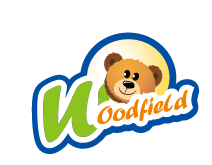
 EN
EN
 AR
AR
 BG
BG
 HR
HR
 DA
DA
 NL
NL
 FI
FI
 FR
FR
 DE
DE
 EL
EL
 IT
IT
 JA
JA
 KO
KO
 NO
NO
 PT
PT
 RO
RO
 RU
RU
 ES
ES
 SV
SV
 TL
TL
 IW
IW
 ID
ID
 SR
SR
 UK
UK
 HU
HU
 MT
MT
 TH
TH
 TR
TR
 FA
FA
 MS
MS
 GA
GA
 IS
IS
 EU
EU
 BN
BN
 LO
LO
 LA
LA
 SO
SO
 KK
KK

